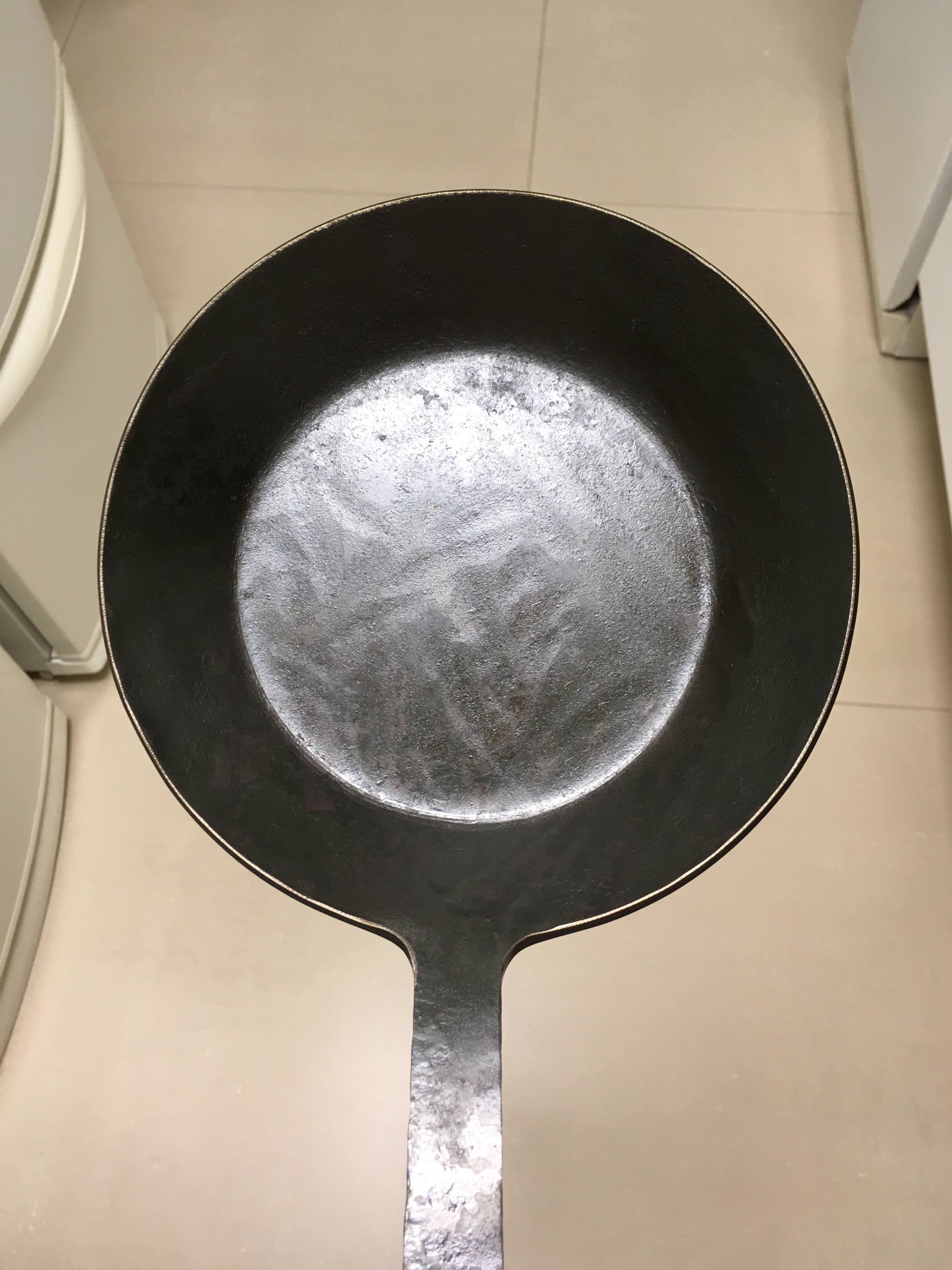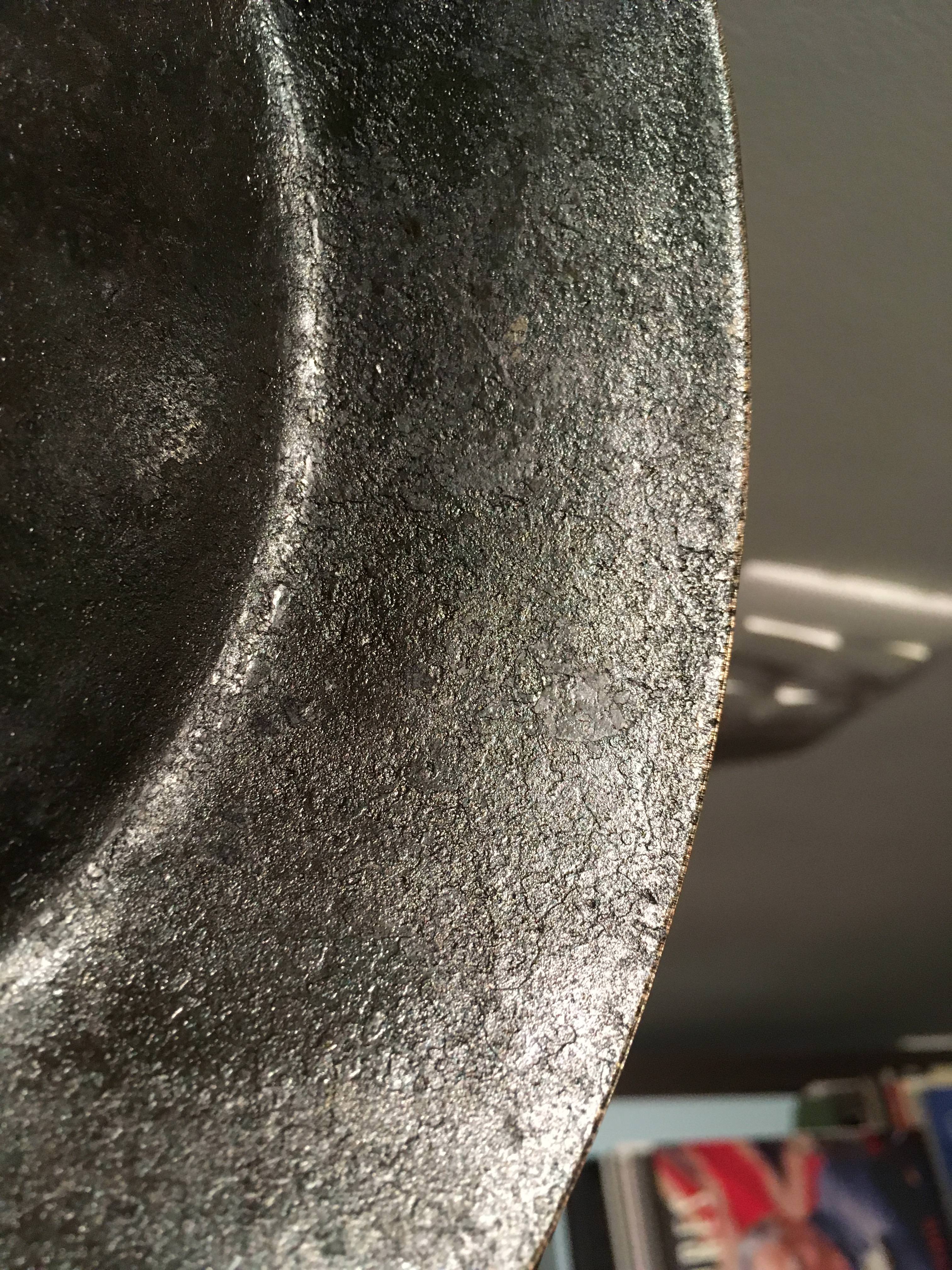- Joined
- Oct 5, 2016
- Messages
- 1,493
- Reaction score
- 11
Links?I found a German seller on eBay selling these for a reasonable price and shipping WW. Will get a 20cm small one to try and get back here with my impression!

Links?I found a German seller on eBay selling these for a reasonable price and shipping WW. Will get a 20cm small one to try and get back here with my impression!
Links?
Quick question on the Spring USA pans: are the dimensions listed the upper or lower diameter?
One general comment - I have come to an impression, that the taller/thicker the walls of an iron pan are, the higher the probabilitiy that the bottom will not remain flat - at least on a glass-top stove. This is most probably because the taller & thicker the walls are, the colder they will remain when cooking and will thus not expand as much as the bottom. What seems to help is to have the dimater of the heated area in the stoove larger than the bottom of the pan, so the sides got more heat. Again - this would not really be a problem on a decent gas stove.
Devon, I hope that you will like the Turk pan. I will be curios to hear whether it will remain as flat as our 24cm version of it.
Hopefully it will
I'm also interested to see how the seasoning goes with the Turk. My two Carbone Plus pans need to have the seasoning maintained as small areas of seasoning often flake off. This happens more so with the larger pan and - in particular - if I try to cook liquid (other than oil). It's okay if I deglaze the pan and quickly make a sauce, but any extended contact with liquid will often lead to flaking.
Another poster in another thread mentioned that this flaking may be due to the surface of the steel pans being more polished in comparison to cast iron, meaning that the seasoning doesn't have such a textured surface to cling on to. To test this theory, I roughed-up the surface (with 240 grit wet and dry) of my carbone pans and re-seasoned them to see if things improved. Things did improve, to some extent anyway - especially in the 24cm one.
If I have a bad flaking experience in the future, I might remove the seasoning again and try roughing them up with a lower grit paper before re-seasoning again...
Steven
Im super impressed with the Spring USA pans. They actually have smoother bottoms than debuyer. No need to season them either. Plus their induction comparable. Also they have s nice shape. Conical sides but taller than debyuer. No rivets either.
lots of people try to season steel like iron.
do things like bake the pan with oil for 1 hr.
cast iron is more porous than steel
its like a stone that is soaker vs splash and go.
absolutely wrong to treat them the same--
steel has its own properties.
steel is easy to season, btw.
takes <30 min
After reading amazon reviews/complaints,
its clear that user error is often a big factor.
I am no expert on seasoning of steel pans, but what worked best for me was to first just warm up the pan, put a little linseed oil on a paper towel and just make the pan greasy and wipe all the oil you can wipe. The heat it up and let the oil burn away (the surface will become mat). Repeat the process a few times, but leave the pan to cool down in between.
What I also do often is after using the pan I would scrubbed it under hot water with a steel wool sponge, dry with a paper towel and bring it up to the smoking point, so the thin layer of fat left in the pan would be carburised. That seems to bring a rather stable seasoning over time.
salt potatoskin oil


Hey Steven. I've had this issue of flaking a few times with different pans and woks. In my case I found the root cause was initially seasoning with too much oil. When I re-seasoned using much thinner coats the issue disappeared. As for this thread and the Turk pan... yet another thing to try...
Thanks Steven. I usually season in the over to avoid warping. Heating an empty pan for longer that a few minutes usually doesnt end well for me.
It escapes me why I never came to the idea of seasoning pan in the oven. Sounds like a great idea. Is 270 degrees Celsius enough? That is as far as our oven goes.
I season pans in the oven, usually for about 45 minutes, although 30 is probably enough.
For a temperature setting, I think the main idea is to stay far enough below the smoke point of whatever oil you're using. This avoids a bitter taste in the seasoning (and a lot of smoke in the oven!). I season pans at 400 F / 232 C for peanut oil, where the smoke point is 450 F / 232 C.
Enter your email address to join: